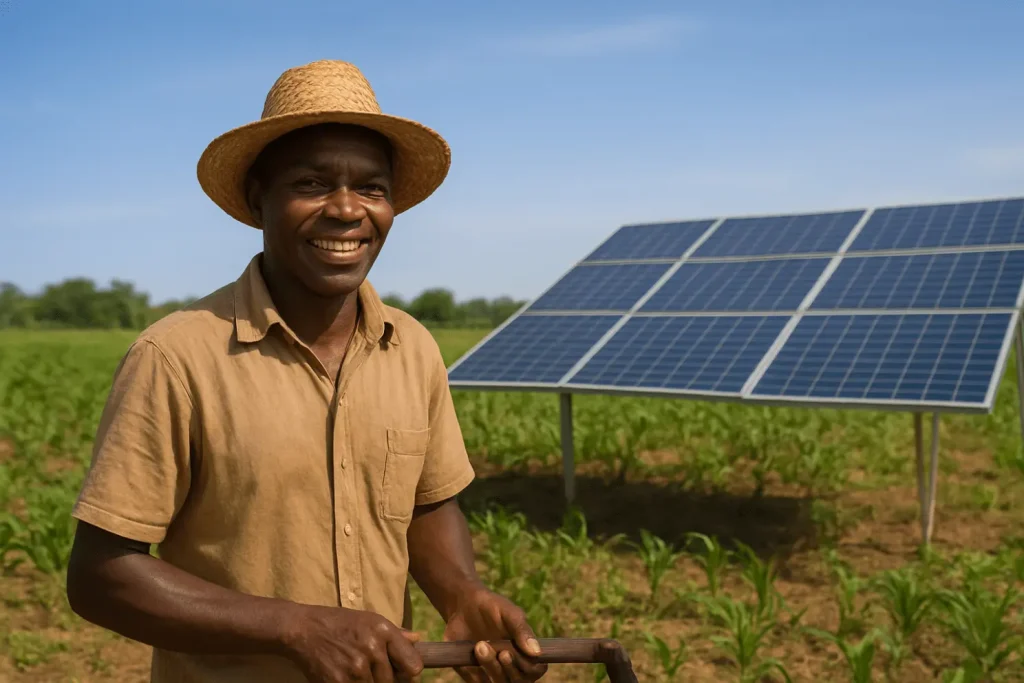When Energy Meets Agriculture: Awakening Opportunity Across Zambia’s Fields
Zambia has huge agricultural potential. It is endowed with large arable land of 42 million hectares of which only 1.5 million hectares are cultivated every year (Zambia Development Agency, 2025). Only about 4% of this land is irrigated, leaving crops vulnerable to droughts and unpredictable rainfall (Maluleke, 2024).
The country also relies on hydropower for about 85% of its electricity. But as southern Africa faces its worst drought in over a century, it has become clear that hydropower alone is not enough (Green, 2024).
Zambia is now turning to solar and wind energy, which bring new hope – but also new challenges. Since these depend on weather conditions, energy storage will be key to ensuring a stable and reliable power supply (Integrated Resource Plan, 2025).
Coming from Denmark, where water and renewable energy systems are part of daily life, I see a strong opportunity for collaboration. Zambia’s story is not only about challenges – it is about innovation, resilience, and the power of shared solutions in a changing climate.
Since the year 2000, the Danish Institute for Human Rights has worked to strengthen access to justice and improve quality of life, ensuring that development is grounded in human rights (Danish Institute for Human Rights, 2025). At the same time, the Danish Ministry of Foreign Affairs have supported Zambia in areas such as education, environmental protection, and climate adaptation (Danish Ministry of Foreign Affairs, 2025).
Together, these efforts help reduce the effects of climate change by supporting renewable energy, sustainable development, and climate-resilient solutions that empower communities and their future. These partnerships show a shared commitment to creating climate solutions that put people first, strengthen communities, and support long-term growth.
Over the last decade, companies working on sustainability and climate solutions have become more important in Zambia’s infrastructure — and ZamNordic is part of this shift. With experience in both Denmark and Zambia, ZamNordic bridges the gap between the two countries, applying practical Danish knowledge to support renewable energy, climate-resilient solutions, and local development in Zambia. By combining this international experience with local understanding, the company helps communities respond to climate challenges and promotes sustainable growth.
Partnerships like these, show what is possible when knowledge, experience, and communities come together. At ZamNordic and the upcoming ZamNordic Business Conference, we are looking forward to exploring more solutions, sharing experiences, and building networks that drive sustainable growth and climate resilience in Zambia. Join us as we take the next step together.
References :
- Danish Institute for Human Rights. (2025). Zambia: Where we work. https://www.humanrights.dk/where-we-work/zambia
- Danish Ministry of Foreign Affairs. (2025). OpenAid: Projects in Zambia. https://openaid.um.dk/projects?Country=ZM
- Green, M. A. (April 22, 2024). Africa’s hydropower dilemma in a changing climate. Wilson Center. https://www.wilsoncenter.org/article/africas-hydropower-dilemma-changing-climate
- Integrated Resource Plan. (2025). Zambia Integrated Resource Plan for Renewable Energy and Storage. Ministry of Energy, Government of Zambia. https://www.moe.gov.zm/irp/?p=2528
- Maluleke, T. (May 6, 2024). Drought in Zambia: Irrigation and adaptation challenges. Good Governance Africa. https://gga.org/water-water-everywhere-but-zambia-is-water-insecure/
- Zambia Development Agency (ZDA). (2025). Investment Priority Sectors. Zambia Development Agency. https://zda.org.zm/priority-sectors/

